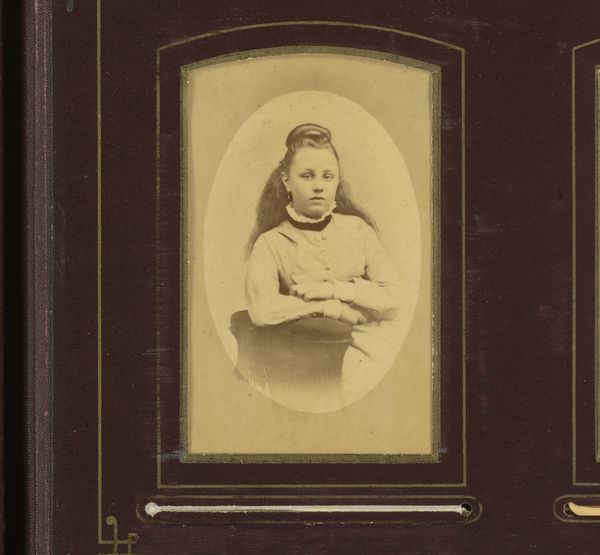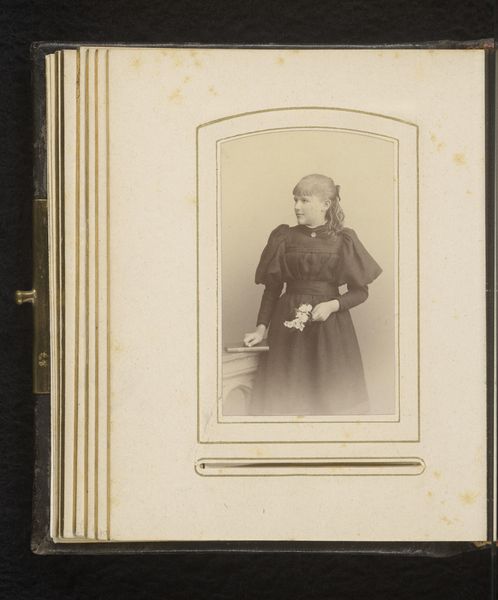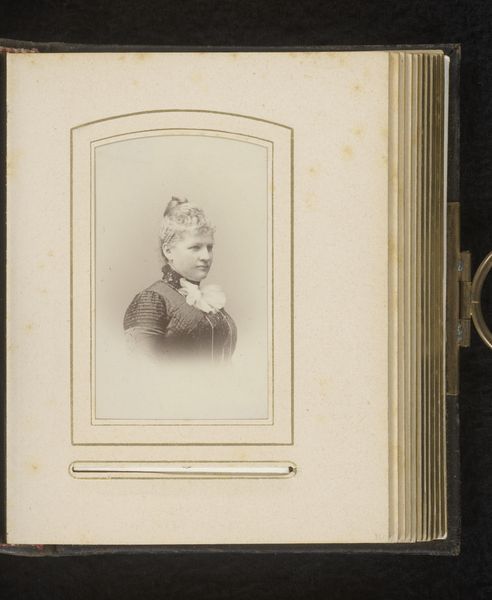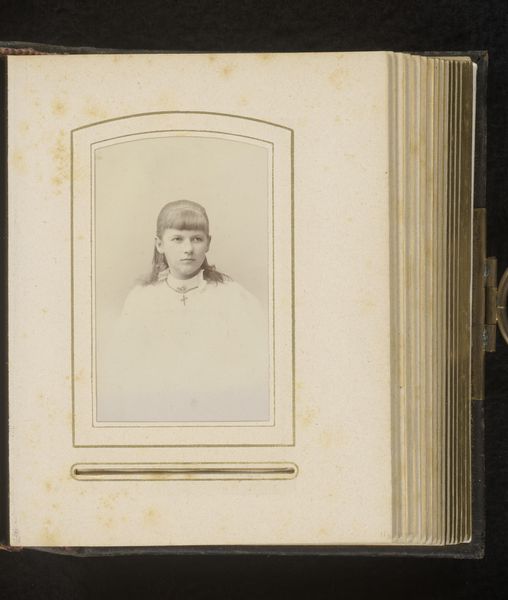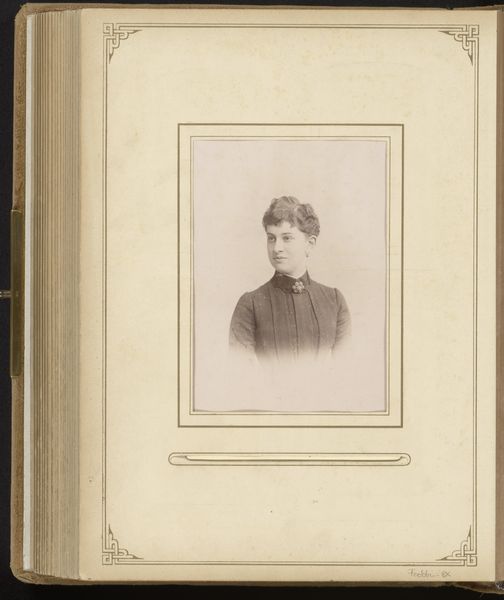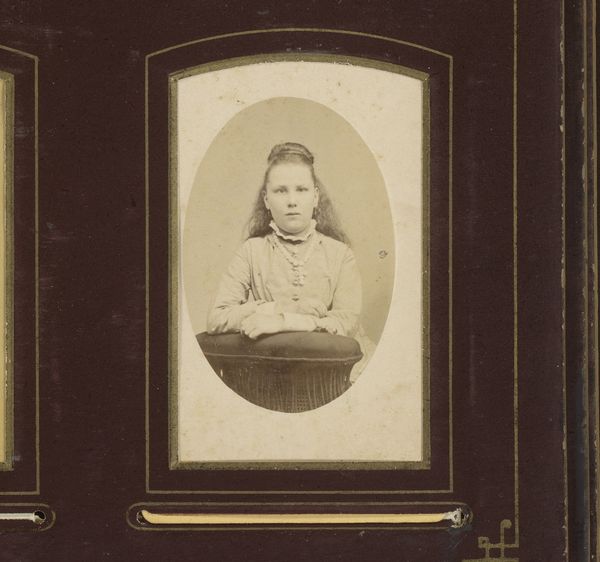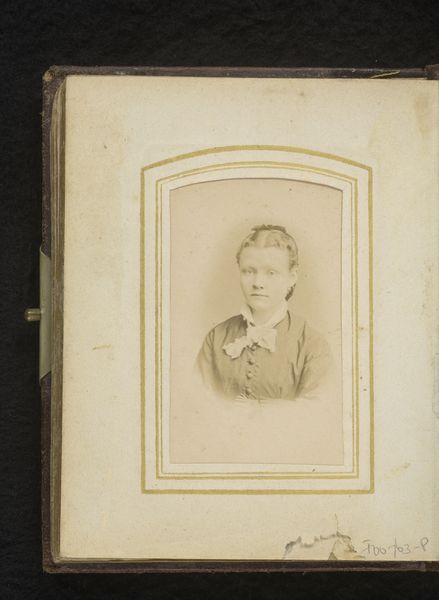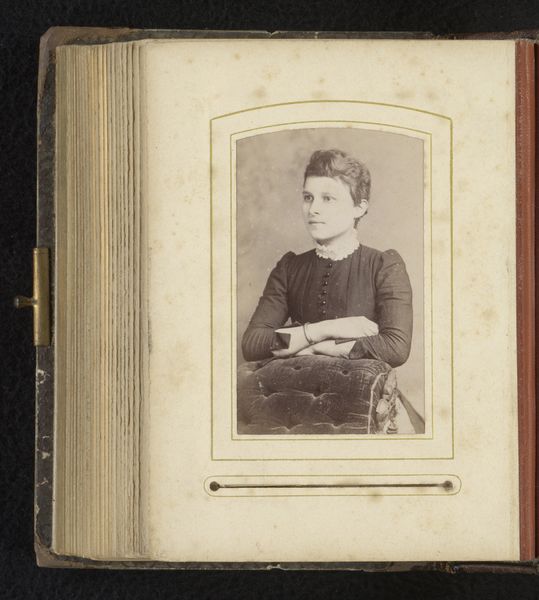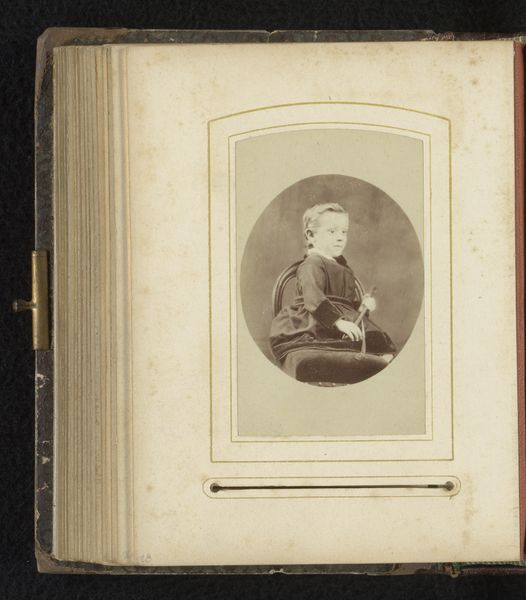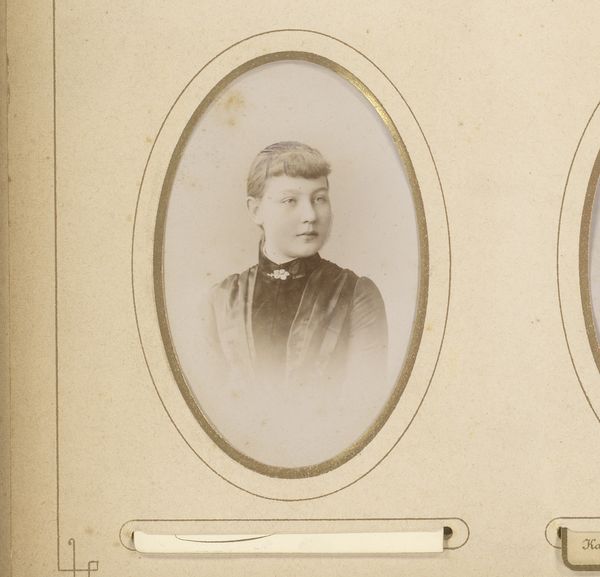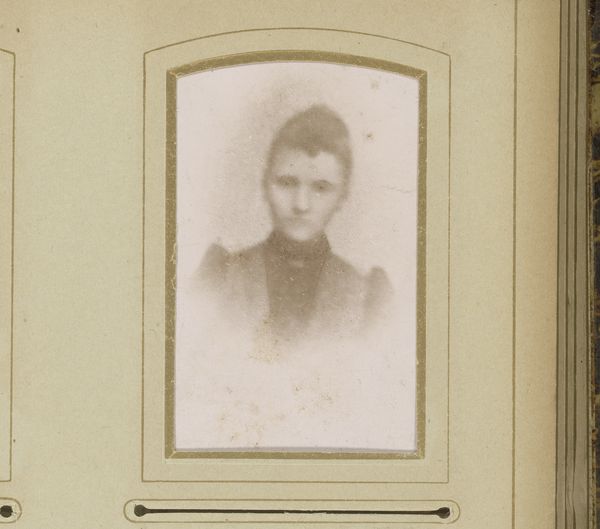
photography, gelatin-silver-print, albumen-print
#
portrait
#
pictorialism
#
photography
#
gelatin-silver-print
#
genre-painting
#
albumen-print
Dimensions: height 106 mm, width 64 mm
Copyright: Rijks Museum: Open Domain
Editor: This is a gelatin silver print, a portrait of a young woman taken sometime between 1900 and 1910, by Willy Dose. The first thing that strikes me is how formal it feels. It’s not just a photograph; it feels like a statement. What do you see in this image? Curator: I'm drawn to the visual vocabulary at play. Consider the presentation – the photo nestled within the album page, like a precious memory carefully guarded. The young woman is poised, almost staged, which hints at a societal expectation for young women at the time. The book she holds, seemingly unopened, serves as a prop, a symbol of intellect and refinement. But does it reflect reality or aspiration? What is she meant to represent here? Editor: That's interesting! So the book might not necessarily signify her actual interests, but rather what was considered desirable or appropriate for women? Curator: Exactly. The “genre-painting” tag becomes relevant here. It's not just a record; it's a constructed image playing with established visual tropes. It invokes cultural memory, echoing similar poses and symbolism in painted portraits from previous eras, embedding this young woman in a continuum of ideals. Pictorialism, with its soft focus, further blurs the line between photography and painting, lending a certain romanticism to the subject, elevating the everyday. What kind of woman did Dose want us to remember? Editor: It almost seems like she's been placed within a frame within a frame – like the album itself is trying to elevate her image. Curator: Yes! Think about that compositional choice and how much that visual element affects your psychological connection with her. How does the framing influence how we interpret her as an individual within that broader historical context? Editor: I see. The picture feels less about the specific person and more about a broader ideal of femininity at the time. It gives me a new perspective on what portraiture could signify! Curator: Indeed!
Comments
No comments
Be the first to comment and join the conversation on the ultimate creative platform.
